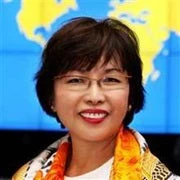Developing countries today have unprecedented numbers of schools, classrooms, teachers—and students. Remarkable accomplishments have also been made towards achieving gender equality at all levels of education (see World Bank, 2010). Since 1999, girls’ gross enrollment rates have risen fastest in South Asia, especially at the primary level, by about 30 percentage points; in South Asia, girls’ enrollment rates at the secondary level rose almost as fast. In the other regions where girls’ enrollment rate at the primary level was already very high, girls’ enrollment rate at the secondary and tertiary levels showed impressive increases.
Despite this progress, millions of school-age children, particularly girls, remain out of school. For reasons including poverty and inadequate schools, many children never enter and many leave well before completing even the primary level. Boys and girls show different and complex patterns of attending and dropping out of schools, with boys being more likely than girls to ever attend school, except in Latin American and Southeast Asia, but that once enrolled girls are more likely to remain in school and to complete more years of schooling.Therefore, improving girls’ education worldwide requires overcoming initial barriers to schooling and providing girls with opportunities to set foot in school.
Source: UNESCO Institute of Statistics, accessed at EdStats.
Why is it imperative that the world’s 3.4 billion girls and women have the same chances to gain an education as boys and men? Basic education is a human right that allows people to live fuller, healthier, more satisfying lives. For societies and economies as a whole, education is also a strategic investment to improve their prospects for development. For all countries, educating all their people, not just half of them, makes the most sense for future progress. Systematic disadvantage in access to schools for girls translates into a less educated workforce, inefficient allocation of labor, lost productivity and consequently diminished progress of economic development.
The benefits from women’s education go both beyond higher productivity for them(*1) and beyond economic growth. Women with more education tend to be healthier, have fewer children, and secure better health care and education for their children. These benefits transmit to their communities at large and cascade across generations.
While gender accounts for observed disparities in education, poverty persists as the most important and pervasive factor for education inequality. According to calculations based on individual data from Demographic and Health Surveys (DHS) in 24 low-income countries, on average, only 34 percent of girls in the poorest-quintile households in these countries complete primary school, compared with 72 percent of girls in the richest-quintile households, a difference of 38 percentage points due to income poverty alone. In comparison, controlling for income, the gap between the poorest girls and the poorest boys is about 10 percentage points, and that between the richest girls and the richest boys is 12 percentage points, showing narrower gender inequality among the poor than among the rich.
Download the data. For the full report, click here *2.
*1. Focusing on the evidence in just one country, Durasaimy (2002) concludes that investment in women’s education in India, particularly at the middle, lower secondary and higher secondary levels, has been more profitable than that for men in 1983 and also in 1993-94. And while the returns to women’s primary and middle levels of education have declined, those to secondary and college levels have increased during the decade 1983–94.
*2. King, Elizabeth, and Vy T. Nguyen. "Gender, Poverty and Institutions: Intersecting Sources of Education Inequality." In Engendering Empowerment: Education & Inequality. A companion volume to the E4 conferences, by United Nations Girls' Education Iniative, 21-34. New York: UNGEI, 2012.
World Bank (2010), Equal Opportunities, Better Lives. Gender in Africa: Using Knowledge to Reduce Gender Inequality through World Bank Activities, Washington DC: The World Bank.
Blog by Elizabeth M. King and Vy T. Nguyen



Join the Conversation